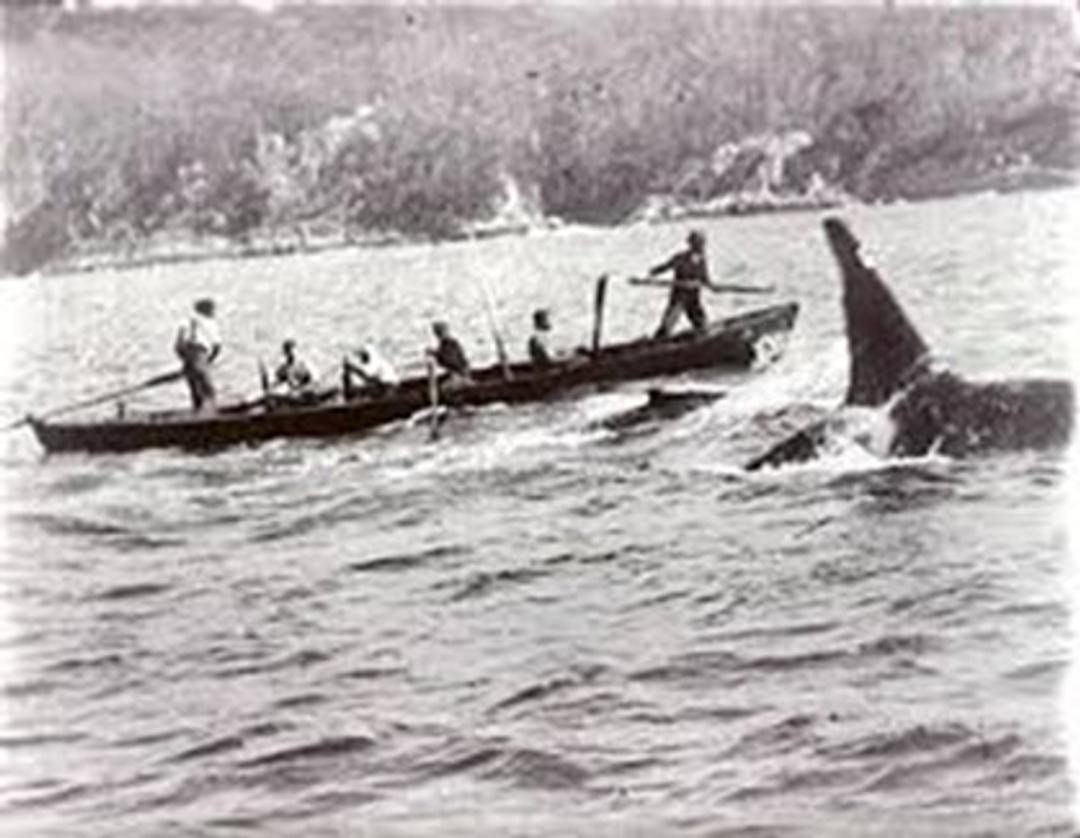William "Butty" Parr
Vessel Name: Bessie
William "Butty" Parr
Careening Bay, Garden Island
13 July 1888

William Parr was a Māori born about 1813 at Waiotahi, Opotiki, Tāmaki Makaurau [Auckland] in New Zealand. His father was the chief of their people, a man of considerable importance. William’s face and chest were covered in tribal tattoos. Wiliam’s name in his own language was Pah. In Western Australia he was known far and wide as Butty. The nickname was his term for butter.
As a boy Butty was taken prisoner by the Bay of Islands tribe during war. He stayed with them until he was 16 years of age, at which time he joined a mission party aboard their brig, Columbine.
Before too long he shipped on the American whaling barque Merope, owned by whaling boat owner Marmion under Master Hogg, bound for Australia. While anchored off Fremantle the Merope parted her bow cables and was damaged on Scott Reef and stranded on Parmelia Bank. The barque was sold with her cargo, and the crew returned to South Australia. Butty stayed in Western Australia.
After almost two years as third mate and headsman/boat steerer he arrived in Fremantle on 24 February 1845. He became an excellent whaler, never known to lose his confidence, no matter the danger. He loved whaling and life at sea. He shipped on one of Josh Harwood’s Fremantle whaling vessels as a headsman.
In 1950 Butty shipped aboard the American whaler Young Phoenix as second mate under Captain Isaac Tomkins. Butty took the captain to court to recover £86 in unpaid wages. He had tried to leave the ship in Mauritius resulting in a new contract to remain aboard until the ship returned to Western Australia. The case was heard in February 1856 and was dismissed in favour of the captain.
Butty ventured to Abany, Western Australia and was sealing between whaling voyages in the 1950s. One of the islands used by sealers was known as Monkey Jacket Island. Sailors wore monkey jackets from the 1850s. They were waist length and tapered at the back to a point. Butty left his monkey jacket on one of the islands. He returned to collect it. As a result, he spent several months on the island alone before he was able to signal a ship to collect him. The island was known as Monkey Jacket Island but has since been renamed Westall Island.
In 1854 after the whaling season, Butty joined a gold mining party headed by a man called Sloan. Gold fever had gripped many Western Australians, and in the hard times of the 1850s many people packed their belongings and went to try their luck in the western gold mines. Butty’s party went to Cardup, approximately 40 kms inland from Perth. They sank a shaft 13 feet deep and found three large lumps of gold-bearing quartz. Newspapers reported the find, and Butty’s find of a small nugget. The mine did not prove very profitable, and Butty returned to whaling.
On the south coast near Lake Gage is Butty’s Head and Butty’s Harbour, approximately 35 kms west of Esperance. There is also a beach there called Plumpudding Beach. While on holiday Butty made a plum duff pudding at the head [then called Butty’s Point] and the names are credited to this occasion, which was remembered for many years by those who were there.
John Bateman started his shore based whaling venture in the 1956. Butty worked for John for the rest of his life, mostly working out of Fremantle and Bunbury, with seasons at Castle Rock (1857 and 1861), Cheynes Beach (1862 – 1871), Port Gregory (1860) and Rosemary Island (1872). John described Butty as his “main man in whaling, his principal whaler.”
Each season Butty put his own whale crew together, selecting his own men and so his boat was always in the top few boats taking oil. The crew liked Butty’s calm and measured approach to the dangerous job of whale chasing.
Butty proved to be a favourite of John Bateman, who commented on Butty’s spending habits. Reportedly Butty spent the money he earned for each whaling voyage as he earned it. John recalled paying Butty £100 at the end of one voyage, only to see Butty give it away to friends in a matter of days.
After most whaling seasons until the 1870s Butty went snapper fishing with Dick Maxworthy for John and Walter Bateman. They caught and dried tons of snapper at Safety Bay. The Bateman brothers had two ships carrying dried snapper to China and Mauritius, which returned with sugar, rattan, dates and preserves for the Australian market.
In the 1860 whaling season at Bunbury, Butty took his crew out to chase a humpback whale. John Bateman (Jr) was the headsman on the second whaleboat. Butty fastened onto a four-ton humpback whale. The whale fought and Butty’s whaleboat was stove and quickly sank. While other boats came up and secured the whale, John’s whaleboat was smashed. The crews of the two whaleboats were picked up safely. Butty’s whaleboat was recovered and was able to be repaired. The other boat was irreparable.
That season also saw Butty in Champion Bay. That year he went whaling out of Port Gregory. The Daily News reported he was one of a crowd on the jetty peering into the water at sea creatures on the seabed. Butty stripped off his clothes and entered the water. Diving to the bottom he resurfaced some minutes later with a crayfish in each hand, and one in his mouth. Later, of course Geraldton became known as a major crayfishing centre.
On 18 September 1884 Butty was arrested in Fremantle for being drunk and disorderly. He spent the night in the lock up and appeared in the Police Court the next morning. He was released with a caution.
Butty lived aboard the Bessie, an older vessel belonging to John Bateman. Bessie was not used regularly, but her upkeep was still required. Butty was appointed as the caretaker, and when he was not fishing, he maintained and repaired her, ready for use when required.
John Bateman tried to convince Butty to live ashore, but Butty declined. He preferred to be at sea. On 13 July 1888, a crew boarded Bessie and discovered Butty had died. They took his remains aboard in a whaleboat. Butty was about 75 years old. The coroner found no suspicious circumstances around his passing.
John Bateman paid for Butty’s funeral service on 14 July and made a eulogy describing his work and times in his long, adventure-filled life. The hearse to the cemetery was decorated and followed by many old friends and workmates. He was buried with an old prayer book he prized. It was reported Butty was buried at the Skinner Street Cemetery, Fremantle, however, there does not appear to be a record of it.
